On this page
Books about the OilbirdThis page lists books that are wholly or partly about the Oilbird. The books are listed in order of publication date with the most recent at the top.
Oilbird
Family: Steatornithidae
Oilbird Steatornis caripensis
The Oilbird is found in the north of South America and on Trinidad.
|
|
|
|
Nightjars, Potoos, Frogmouths, Oilbird, and Owlet-nightjars of the WorldNigel Cleere
Princeton University Press
2010
"This is the ultimate identification guide to the nightjars, potoos, frogmouths, Oilbird, and owlet-nightjars of the world. Covering all 135 known species of these elusive and cryptically plumaged birds, this illustrated guide features more than 580 superb color photographs depicting every species and many subspecies, including numerous images never before published. Photos of museum specimens are provided for birds for which no images in the wild exist, including species not seen since their original discovery. Detailed species accounts describe key identification features, confusion species, vocalizations, distribution, habitat and altitudinal range, breeding season and sites, egg type and clutch size, downy chick, status, and Red List category. This easy-to-use photographic guide also includes a color distribution map for every species as well as sections on plumage, taxonomy, and more."
|
Buy from amazon.co.uk 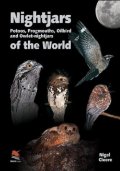
|
|
Nightjars and their Allies: The CaprimulgiformesD.T. Holyoak
Colour plates: Martin Woodcock
Oxford University Press
2001
796 pages, 23 colour plates, numerous halftones, line drawings and maps
This book includes general, introductory chapters which review evidence about the group's evolutionary ancestry and place the birds' distributions, behaviour and physiology in an evolutionary context. The second section provides a comprehensive study of the 118 species giving details of coloration, plumage, moults, geographical variation, body measurements, habitats, behaviour, conservation, and evolution. The 23 superb plates by Martin Woodcock illustrate all the species, with behaviour and subtle variations depicted by delicate halftone drawings.
|
Buy from amazon.co.uk 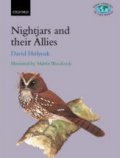
|
|
Nightjars: A Guide to Nightjars and Related Night BirdsNigel Cleere and Dave Nurney
Pica / Yale University Press
1998 / 2000
This book fully covers this popular group of birds. The text has been thoroughly researched, both in the museum and in the field, and the plates depict feather-by-feather detail, allowing identification of all species, providing adequate views are obtained. As voice is so important in nightjar identification, an accompanying CD with the voices of many species was also produced to be sold with the book.
|
Buy from amazon.co.uk 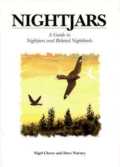
|
|
Handbook of the Birds of the World, Vol. 5: Barn-Owls to HummingbirdsEdited by Josep Del Hoyo, Andrew Elliott and Jordi Sargatal
Lynx Edicions
1998
759 pages, 76 colour plates, 406 colour photos, 758 distribution maps.
This volume covers covered are barn owls, typical owls, oilbirds, frogmouths, owlet-nightjars, potoos, nightjars, swifts, tree-swifts and hummingbirds.
|
Buy from amazon.co.uk 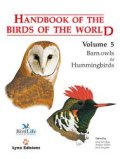
|
|
Oilbirds of Venezuela: Ecology and ConservationR.L. Roca
Nuttall Ornithological Club
1994
|
Buy from amazon.co.uk 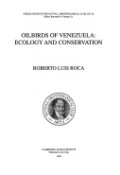
|
|
Catalogue Of The Picariae In The Collection Of The British MuseumUpupae, Trochili and Coraciae (Cypselidae, Caprimulgidae, Podargidae, and Steatornithidae)
Catalogue Of The Birds In The British Museum, Volume XVI
Upupae, Trochili: Osbert Salvin
Coraciae: Ernst Hartert
14 colour plates: J.G. Keulemans
Printed By Order Of The Trustees
Sold by: Longman & Co.; B. Quaritch; Kegan Paul, Trench, Trubner & Co.; and at the British Museum (Natural History)
1892
From the preface: "The preparation of the present volume was commenced in the year 1887, but its publication has been delayed from several causes: the desire of profiting by the most recent attempts at classification rendered changes in the serial arrangement of the families necessary; Mr. Salvin, who at first intended to undertake the whole of the Macrochirous families, together with the Podargidae, was prevented by other engagements from proceeding beyond the Trochilidae, so that a substitute had to be introduced to the work; and, finally, the material to be catalogued was unusually heavy, as it not only comprises the two largest collections of Humming-Birds that have been made hitherto, viz. those of the late Mr. J. Gould and of Messrs. Godman and Salvin, but was also increased by the accessions of the last four years. Consequently the contents of this volume greatly exceed those of any of the previous ones, as will be seen from the following statement: Upupae, 16; Trochili, 482; Cypselidae, 78; Caprimulgidae, 86; Podargidae, 24; Steatornithidae 1. Of the 687 species recorded, 50 are not represented in the Museum; but besides the 211 types of species admitted as valid, the Collection contains 62 other typical specimens, the names of which are now relegated to the synonymic lists. With regard to the types of Trochilidae, their number cannot bo given with absolute certainty, as Gould did not always pay regard to distinctive labelling or to the preservation of individual specimens which he would have wished to be regarded as the types of the species named and described by him."
|
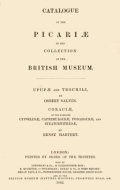
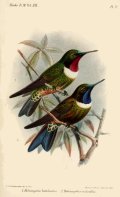
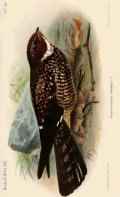 |
|